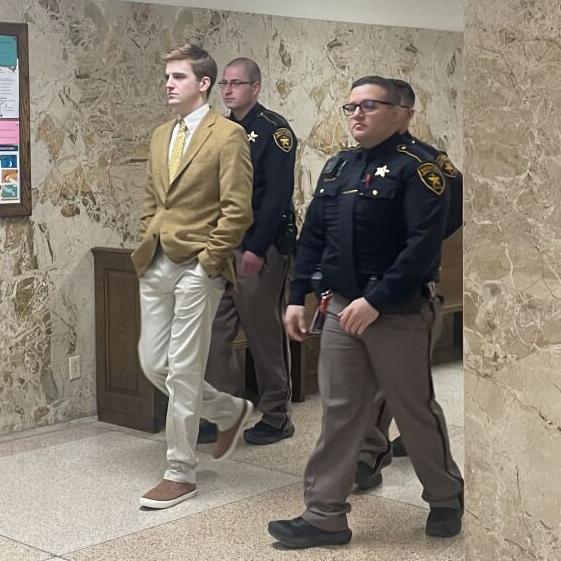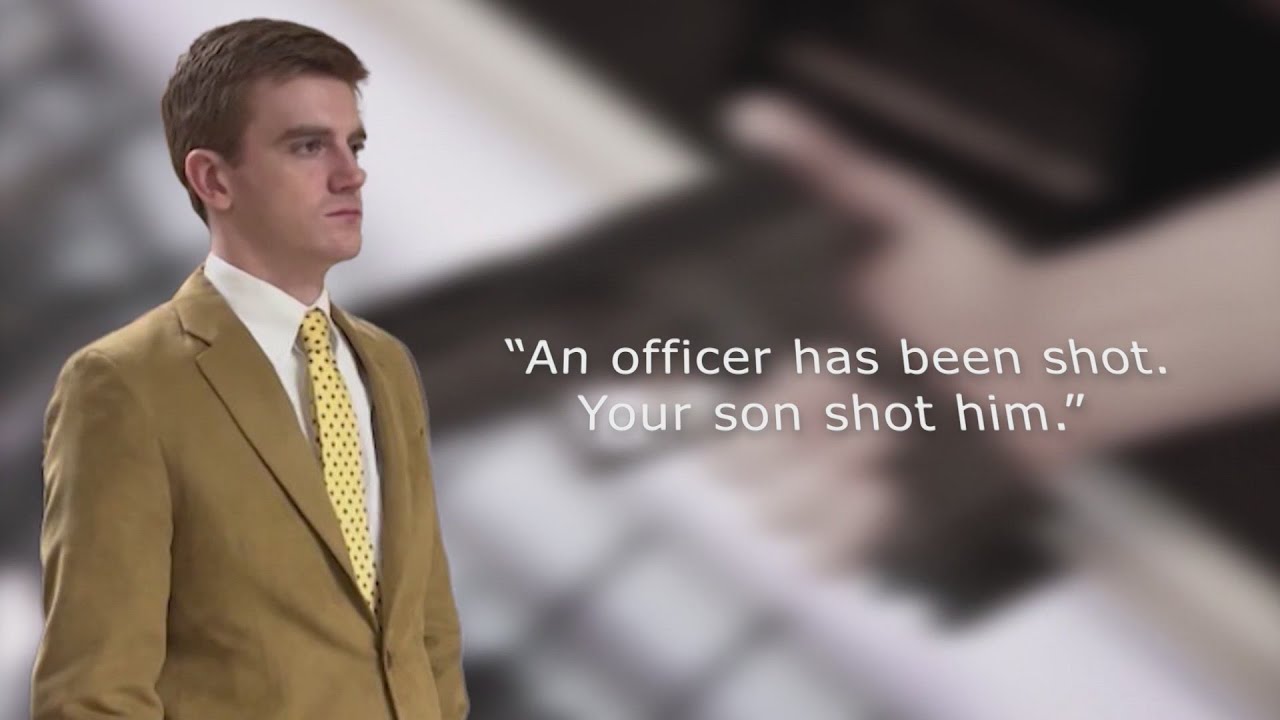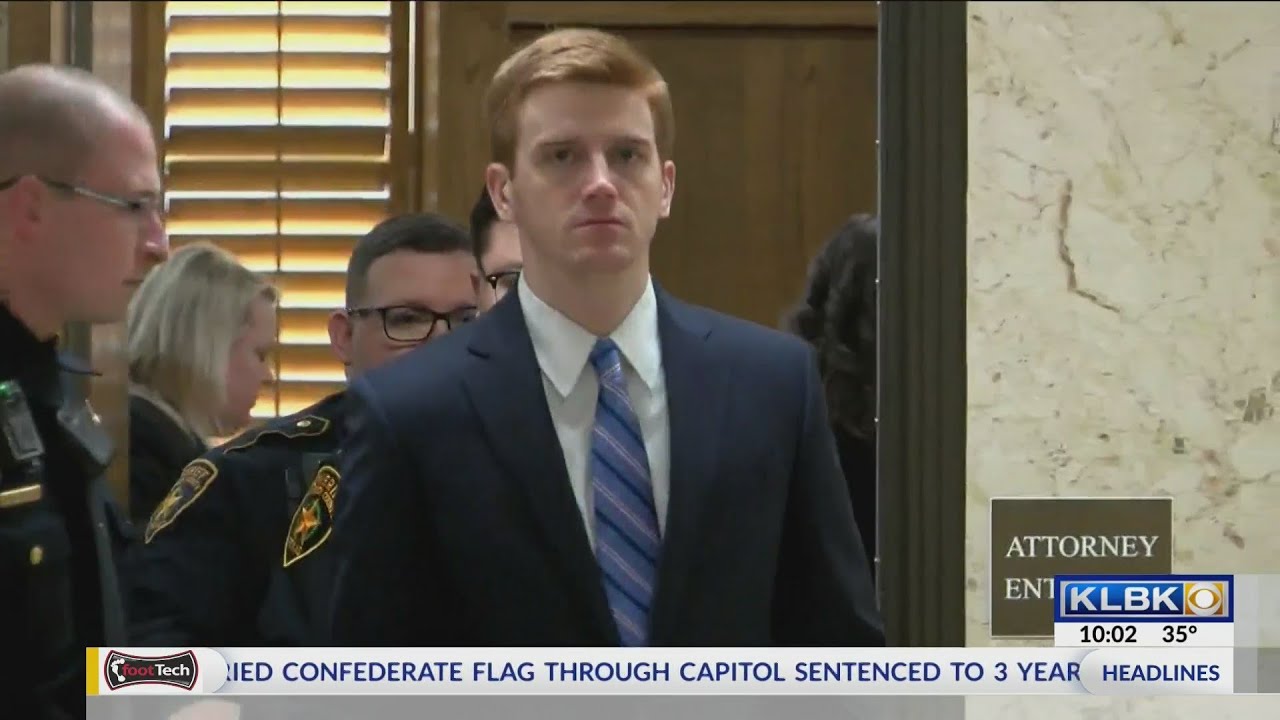The Hollis Daniels Video Impact on Understanding the Murder
Hollis Daniels’ video, as released by the KCBD Investigates Team, has finally shed light on a long-awaited narrative surrounding the tragic murder of Texas Tech Police Officer Floyd East Junior. The footage from body-worn cameras played a pivotal role in revealing the intricate details of the events leading up to that fateful day. For years, the community and the nation grappled with unanswered questions about how this incident unfolded within the walls of the university’s police department.
The significance of this video cannot be overstated. It provided the missing pieces to a story that ended in a heartbreaking loss of life and left a lasting impact on law enforcement and safety protocols at educational institutions. The footage captured not just the moments leading to Officer East’s murder but also highlighted critical interactions that foreshadowed the event. From the initial traffic stop where Daniels was pulled over and questioned about weapons and drugs, to the intense moments in the dorm room where contraband was found, each frame added depth to the understanding of Daniels’ actions and the tragic oversight that allowed him to carry a hidden weapon.
Moreover, the body-worn camera video was instrumental during the trial, offering jurors a firsthand view of Daniels’ deceptive maneuvers and the failure of multiple security checks. This evidence was crucial in securing Daniels’ conviction and his subsequent sentencing to life in prison without parole. It also sparked a broader discussion about the need for improved security measures and the challenges law enforcement faces in ensuring the safety of public spaces.
As the community reflects on this tragic event, the Hollis Daniels video serves as a stark reminder of the vulnerabilities that exist in our systems and the continuous need for vigilance and improvement. The loss of Officer East is not just a single tragedy; it’s a call to action to prevent similar incidents in the future.
Contents
Background Information
On October 9, 2017, a somber chapter unfolded at Texas Tech University when Police Officer Floyd East Junior was tragically shot and killed. The perpetrator, Hollis Daniels III, a student at the university, carried out this heinous act within the confines of the university’s police department. The aftermath of this event sent shockwaves through the community, highlighting the vulnerabilities and challenges faced by law enforcement agencies in securing educational institutions.
Hollis Daniels III was eventually tried and convicted for this cold-blooded murder. The legal proceedings that followed painted a disturbing picture of the events that led up to the murder, capturing national attention due to the shocking nature of the crime and the young age of the perpetrator. Daniels’ conviction culminated in a sentence of life imprisonment without the possibility of parole, a decision that brought a measure of closure to the grieving community and the family of Officer East.

In the immediate aftermath of the shooting, the court implemented a gag order that significantly limited the release of information related to the case. This order prohibited those involved in the investigation and trial from disclosing reports, body-worn camera footage, and dash camera videos. The purpose was to ensure the integrity of the legal process and to prevent any potential prejudice that could arise from widespread media coverage.
Further complicating the transparency of the judicial process, the judge overseeing the trial in February 2023 imposed a ban on all forms of recording within the courtroom. This decision was intended to protect the dignity of the court and the privacy of those involved but also led to frustrations among journalists and the public who were eager for insights into the proceedings.
| Aspect | Details |
|---|---|
| Incident Date and Location | On October 9, 2017, at Texas Tech University, Police Officer Floyd East Junior was shot and killed by Hollis Daniels III, a student. |
| Impact on Community | The event caused significant shock and highlighted the security challenges in educational institutions. |
| Legal Outcome | Hollis Daniels III was convicted of murder and sentenced to life imprisonment without parole, bringing closure to the community and Officer East’s family. |
| Gag Order | A gag order limited the release of information, including body-worn camera and dash camera footage, to maintain the integrity of the legal process. |
| Courtroom Recording Ban | In February 2023, a ban on all forms of recording in the courtroom was implemented, affecting transparency but intended to protect court dignity and privacy. |
The Trial and Its Outcome
The trial of Hollis Daniels III was a meticulously conducted affair that lasted nearly three weeks. During this period, the prosecution and defense presented their cases, examining witnesses and introducing evidence that shed light on the mindset and actions of Daniels. The culmination of these efforts was the jury’s decision to sentence Daniels to life in prison without the possibility of parole. This verdict reflected the gravity of Daniels’ crime and the irreversible loss inflicted upon Officer East’s family and the larger Texas Tech community.
A critical component of the trial was the presentation of video evidence obtained by the KCBD Investigates Team. This footage was instrumental in piecing together the sequence of events that led to the tragic murder of Officer East. Body-worn camera video revealed key interactions between Daniels and law enforcement officers in the hours and moments before the shooting.
The video documented a traffic stop that occurred approximately 19 hours before the murder, where Daniels was questioned about weapons and drugs. His calm denials and refusal to allow a search of his vehicle set a chilling prelude to the events that followed. Later, body camera footage from a welfare check at Daniels’ dorm room captured the discovery of a bullet hole, pills, and drug paraphernalia, further complicating the narrative of the night.

These pieces of video evidence were vital in helping the jury understand how Daniels managed to sneak a gun into the police department and ultimately commit the murder. They painted a detailed picture of the lapses in security and the cunning deceit of Daniels, who managed to evade detection during multiple pat-downs. The footage also highlighted the final moments in the briefing room, where Daniels, unfettered by handcuffs, retrieved the hidden gun and fatally shot Officer East.
The importance of this video evidence cannot be overstated. It not only provided clarity on the sequence of events but also underscored the need for more stringent security measures and the potential for technological enhancements in law enforcement practices. The trial and its outcome serve as a poignant reminder of the risks faced by those who serve and protect, and the ongoing need for vigilance and improvement in security protocols to prevent such tragedies in the future.
Detailed Timeline of Events on Video Youtube
Approximately 19 hours before the tragic incident, Hollis Daniels III was involved in a crucial traffic stop that set the stage for the subsequent events. A Lubbock police officer pulled Daniels over after he had been accused of stealing a friend’s gun earlier that evening. During this interaction, the officer inquired if Daniels had any weapons or drugs in his vehicle. Daniels responded negatively to both questions. However, when the officer requested Daniels to step out of the vehicle for a search, Daniels refused, claiming it was unnecessary as he was merely on his way home. Despite the officer’s insistence that the search was essential due to the ongoing investigation, Daniels was ultimately allowed to leave without a search of his vehicle. This moment highlighted a missed opportunity that could have potentially prevented the later tragedy.
Later, in the early hours of October 9, 2017, a welfare check was conducted at Daniels’ dormitory in Talkington Hall. This check was prompted by his roommates, who reported hearing a gunshot. Texas Tech Police Officer Floyd East Junior, along with other officers, arrived at the scene. Upon knocking and receiving no answer, the officers entered the room and discovered a bullet hole, various pills, and drug paraphernalia. At this point, Daniels appeared but pretended to be his roommate “Andreas,” a deception quickly uncovered by Officer East. The officers found more pills in Daniels’ pocket during a pat-down but failed to locate any firearm.
Following the discoveries in the dorm room, Officer East decided to take Daniels into custody. During the transfer to the police department, body-worn camera footage captured significant sounds and Daniels’ movements in the backseat of the patrol vehicle. Daniels seemed to be maneuvering, likely in an attempt to manage the hidden gun. When Officer East inquired about a loud thump, Daniels misleadingly attributed it to his handcuffs. This critical moment was another missed opportunity, as nothing suspicious was found when East checked the backseat before escorting Daniels out of the vehicle.
| Aspect | Details |
|---|---|
| Traffic Stop Incident | Approximately 19 hours before the murder, Daniels was stopped by Lubbock police for a reported gun theft. He denied having weapons or drugs and refused a search of his vehicle, leading to a missed opportunity to intervene. |
| Welfare Check at Dormitory | Officers conducted a welfare check at Daniels’ dorm in Talkington Hall after a gunshot was reported. They found a bullet hole, pills, and drug paraphernalia but no firearm. |
| Daniels’ Deception | Daniels pretended to be his roommate “Andreas” but was identified by Officer East. During a pat-down, more pills were found, but no gun was detected. |
| Transfer to Police Department | While being transported, Daniels managed the hidden gun in the patrol vehicle’s backseat. Officer East checked for noises but missed identifying the hidden weapon. |
The Murder and Its Aftermath
In the police department’s briefing room, the tension culminated in a devastating turn of events. Officer East, while completing paperwork, left Daniels uncuffed, believing him to be cooperative. During this time, Daniels, exploiting the lack of restraints, reached for the gun hidden near his ankle, partially tucked into his shoe. The body-worn camera, placed on a table to record the room, captured Daniels maneuvering the gun several times before he ultimately pulled the trigger, fatally shooting Officer East. This act was not only a direct attack but also a shocking breach of the perceived security within the police department.

The murder triggered an immediate lockdown of the Texas Tech campus as law enforcement agencies from various jurisdictions converged to apprehend the shooter. The response was swift and coordinated, with officers deploying across the campus to ensure the safety of students and staff. About 90 minutes later, Daniels was arrested and taken into custody, bringing a tense and fearful period to an end. This rapid and effective law enforcement response demonstrated the seriousness with which such threats are handled, but it also underscored the tragic loss and the urgent need for reviewing and enhancing security and safety protocols at educational institutions.
| Aspect | Details |
|---|---|
| Briefing Room Incident | Officer East left Daniels uncuffed while completing paperwork. Daniels exploited this to retrieve a hidden gun from near his ankle and fatally shot Officer East. The event was captured by a body-worn camera placed in the room. |
| Immediate Aftermath | The Texas Tech campus was locked down as multiple law enforcement agencies converged to capture Daniels, ensuring the safety of the community. |
| Arrest of Hollis Daniels | About 90 minutes after the shooting, Daniels was arrested and taken into custody, ending a tense period for the campus. |
| Implications for Security | The incident highlighted the need for a review and enhancement of security and safety protocols at educational institutions. |
Reflections and Questions
The tragic murder of Officer Floyd East Junior by Hollis Daniels III left the community and law enforcement with many lingering questions, particularly about how Daniels managed to smuggle a firearm past multiple layers of security and pat-downs. This glaring oversight has led to significant introspection within the Texas Tech Police Department and other law enforcement agencies. The body-worn camera footage revealed that Daniels underwent two pat-downs: one during the traffic stop and another at his dormitory. In both instances, officers failed to detect the hidden gun. This situation raises critical questions about the techniques and thoroughness of the pat-down procedures. How could the firearm evade detection so consistently? Was it due to the positioning of the gun, the methodology of the search, or a combination of both? These questions underscore the need for reviewing and possibly revising search protocols to prevent similar incidents in the future.
In the aftermath of the shooting, Texas Tech Police Chief Kyle Bonath addressed the pressing concerns about security lapses. He emphasized that the officers conducted themselves professionally and that all standard procedures were followed. However, he acknowledged that this was a “very unique situation” and hinted that the full clarity might only come from the trial. During the trial, Daniels himself provided some insights. He explained that during the dorm room pat-down, his sagging pants allowed the gun to slip further down his leg with each touch, effectively evading detection. He also described how he managed to retrieve the gun from the floor of the patrol vehicle and position it near his ankle while still handcuffed. These explanations offered a chilling insight into the cunning and determination of Daniels but also highlighted potential vulnerabilities in current security practices.
| Aspect | Details |
|---|---|
| Security Failures | Despite undergoing two pat-downs, one at the traffic stop and another at his dormitory, officers failed to detect the hidden gun Daniels carried. |
| Questions Raised | Questions about the efficacy of pat-down techniques and the failure to detect the firearm led to a call for review and revision of search protocols. |
| Police Chief’s Statement | Texas Tech Police Chief Kyle Bonath stated that officers followed standard procedures, but acknowledged the uniqueness of the situation and the need for full clarity from the trial. |
| Daniels’ Testimony | Daniels explained how his sagging pants and the positioning of the gun helped him evade detection during pat-downs and how he managed to retrieve and position the gun while handcuffed. |
The implications of this tragic event for law enforcement and the community are profound. The murder of Officer East is not just a loss of a dedicated officer; it is a stark reminder of the challenges and risks that law enforcement personnel face every day. This incident has prompted a broader discussion on the need for more rigorous training, especially regarding search procedures and the handling of suspects. For the community, especially the students and staff at Texas Tech, the event was a traumatic experience that shattered their sense of safety and security.
Moreover, this tragedy has fueled an ongoing quest for answers and improvements. It has highlighted the importance of continuous learning and adaptation in law enforcement practices to address evolving threats. The fact that Daniels could maneuver within the system to commit such an act indicates that no institution can be complacent about security. Every layer, from the initial stop and search to the handling of suspects in custody, must be scrutinized and strengthened.
Ultimately, the impact of this tragedy extends beyond the immediate loss. It serves as a painful reminder of the vulnerabilities that exist and the work that needs to be done to ensure such events do not recur. The lessons learned from this incident will undoubtedly influence law enforcement policies and practices for years to come, but the memory of Officer East and the events of that day will remain a poignant call for vigilance, improvement, and respect for the risks that officers face in their duty to protect and serve.
Global News -Exploring the Elite Employees Original Video and Its Impact
Danna Head Incident Son No Blur Accountability
Daniel Larson Toothbrush Video Incident Controversy
The Corpse Husband Face Leak Reveal Controversy A Privacy
How a Hair Claw Car Accident Wearing Claw Clip Video
Popular Kenyan TikToker Brian Chira Accident Video
From the NFL to American Idol Blake Proehl’s Viral Video
